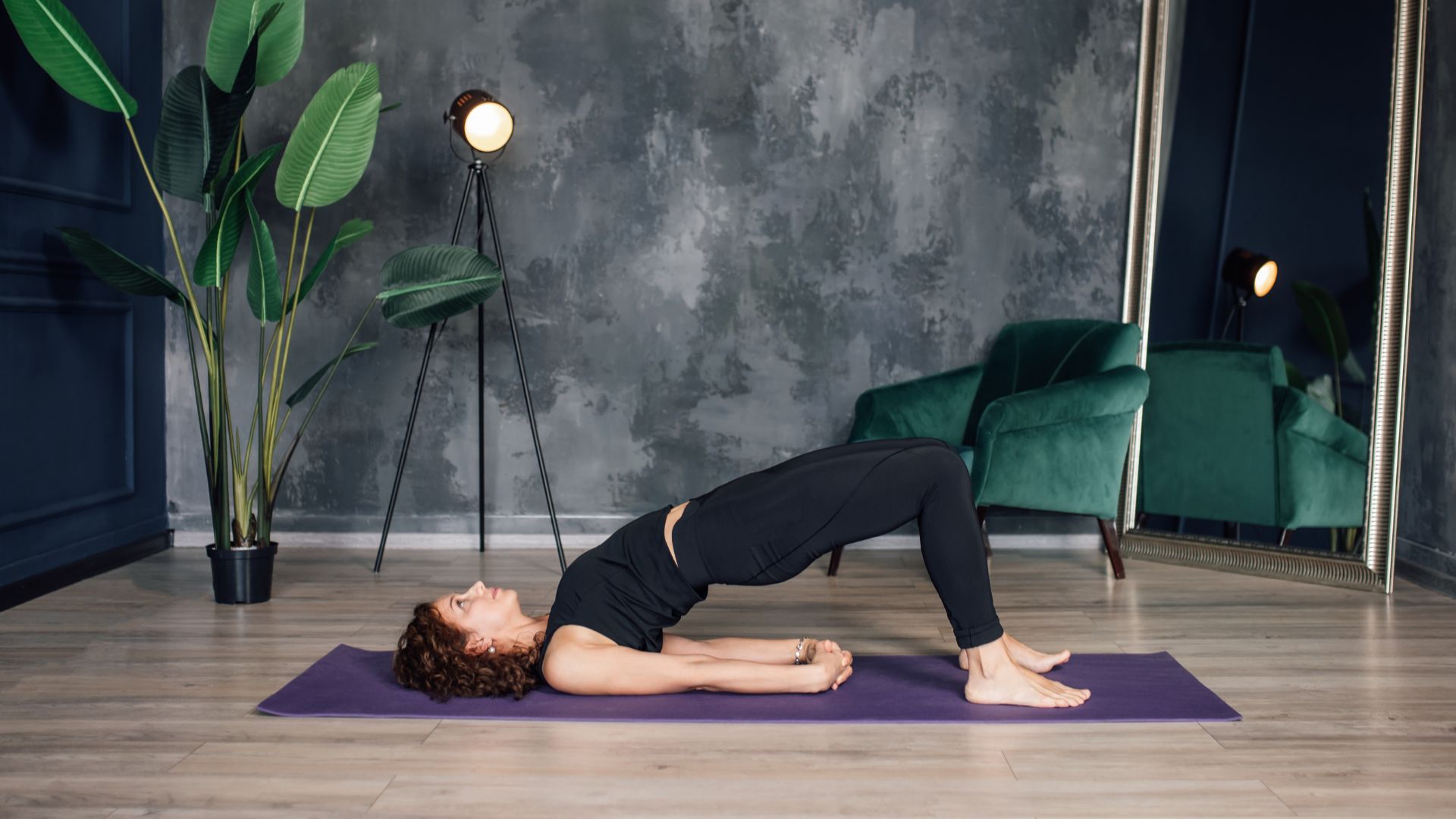Forget gym workouts - these 4 easy exercises for women over 50 can help you stay active into your 70s
You can do this simple workout at any time of life for healthy ageing, but these are key exercises for women over 50 who may be going through menopause too

These exercises for women over 50 target major muscle groups in the body, including the legs, arms, chest, and core, making them some of the best exercises for longevity. Together with regular practice, they can help boost strength, stability, and balance in later life, which is key for staying mobile.
Physiotherapist Fikri Fikriev, who works with Physiotherapy Matters and Danforth Care Homes, says: “The rate of muscle mass loss depends on age and lifestyle, but we gradually begin to lose muscle mass from our 30s to 40s. This process can pick up at 65 to 80 years old. The rates vary, but reach as high as 8% muscle mass loss per decade.
“This can affect your mobility and energy levels, hence why it’s essential to have a balanced routine that helps to preserve strength and flexibility as we age,” he adds.
Those used to regular strength training with weights at home or in the gym will likely find these too easy. But, if you're new to exercise or have had a break for a few years, these are a great go-to to get back into the swing of things.
Exercises for women over 50
1. Two-leg bridge
Bridge exercises can improve back pain and hip, hamstring, and glute strength, says Fikriev. They can also help stretch out the hip flexor muscles, which can get tight if you spend a lot of time sitting down.
"Bridge exercises can also help strengthen the core and pelvic floor," the physiotherapist adds. Fluctuating hormone levels before menopause can weaken muscles around the pelvic floor, which sits along the bottom of the pelvis, and cause issues like bladder leaks in later life.
Here's how to do it:
Sign up to our free daily email for the latest royal and entertainment news, interesting opinion, expert advice on styling and beauty trends, and no-nonsense guides to the health and wellness questions you want answered.
- Lie with your back flat on a yoga mat, arms by your sides.
- Take a breath in, squeeze your glutes, and lift your pelvis up towards the ceiling.
- Hold for a moment, breathe out.
- Slowly return to the ground.
- You should feel the movement in your buttocks and back of your thighs.
Too easy? Make it harder by wrapping a resistance band just above the knee.
2. Wall push ups
Push-ups are harder than they look, but luckily, there are a few different ways to do them and still feel the benefits.
Fikriev says: “Push-up exercises are a great way to improve posture and upper body strength in your back, chest, and core. They also help to improve heart health, lose body weight and fat, and lower blood pressure and cholesterol.”
If you’re a beginner, try them against a wall before moving on to a countertop or table to do them on an incline. When you’ve mastered these, you can try doing them on the floor.
Here's how to do a wall push up:
- Stand an arm's length away from a wall, placing both hands onto the wall.
- Bring your shoulder blades back and down, and engage your core. Follow the advice on pelvic tilts if you're not sure how to do this.
- Take a breath in, slowly lower yourself towards the wall until your nose is a few centimetres away.
- Breathe out, hold it for a moment.
- Push back up to the starting position.
3. Sit to standing squat
Functional exercises such as squats and lunges improve our ability to be able to do daily activities and stay independent as we age, says Fikriev. “This includes sitting down or standing up, climbing stairs, and improving balance and strength in the lower body."
How to do a sit-to-stand squat:
- Stand in front of a chair or surface at knee level or just above, feet shoulder-width apart.
- Breathe in, engage your core, and move to sit down onto the chair without using your arms. Keep them by your side or out in front of you if that's easier.
- Once you touch the chair, breathe out, and use the balls of your feet to push yourself up to standing.
4. Calf raises
A calf raise is a great exercise snack to squeeze into your day when you're boiling the kettle or waiting for food to cook.
Fikriev says they “offer several benefits, including improved balance, increased ankle stability and mobility, and enhanced strength”.
Here's how to do a calf raise:
- Do a basic stretching routine for the calf first before doing this movement to avoid discomfort and potential injury.
- Stand behind a chair or close to a wall, using the surface as a support for balance if needed. Try not to grip the support. Just use it lightly.
- Raise yourself up onto your toes, hold for a moment, and bring yourself back down slowly.
- Repeat the movement.
He says calf raises can also improve lower limb blood circulation, reducing the risk of sprains or falls.
“Calf raises increase Achilles tendon resilience, reducing the risk of tendinopathy, which can negatively impact walking and running. You can then progress towards single calf raises and into jumping calf raises (plyometric). All can be done with or without additional weights," says Fikriev.
If you like doing a Pilates workout at home (another one of the great exercises for women over 50), then you'll likely be familiar with these already.
What is the best workout routine for a 50 year old woman?
While these are great exercises for anyone new to strength training, the best combination of exercises in a weekly routine is some cardio (a walking workout outside, running, swimming, etc), some strength training (using traditional weights or Pilates with weights, for example), and a type of flexibility training (simple yoga poses, stretching, or even a ballet-inspired workout).
Using weights like dumbbells and kettlebells regularly will also help with progress in the exercises, allowing you to continually put your bones and muscles under pressure, which is needed to get stronger.
The NHS recommends 150 minutes of moderate intensity exercise every week to reap the benefits of movement throughout your life. This can also be done as 75 minutes of vigorous intensity exercise.
However, everyone has different priorities, availability, and movement requirements, so it's best to speak to a certified personal trainer, physiotherapist, or doctor if you're looking to build a specialised exercise plan.

Kat Storr has been a digital journalist for over 15 years after starting her career at Sky News, where she covered everything from world events to royal babies and celebrity deaths. After going freelance eight years ago, she now focuses on women's health and fitness content, writing across a range of UK publications.
From perimenopause to the latest fitness trends, Kat loves researching and writing about it all. She's happy to give any fitness challenge a go and speaks to experts about wellbeing issues affecting people every day.




